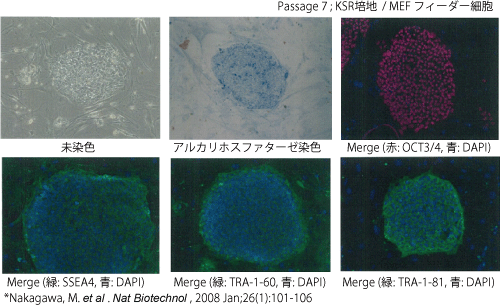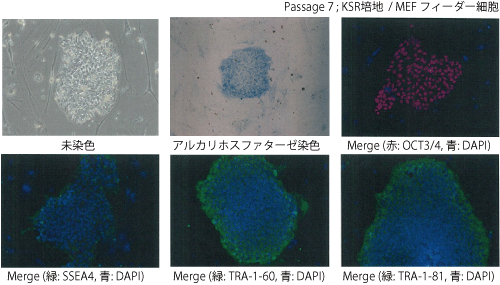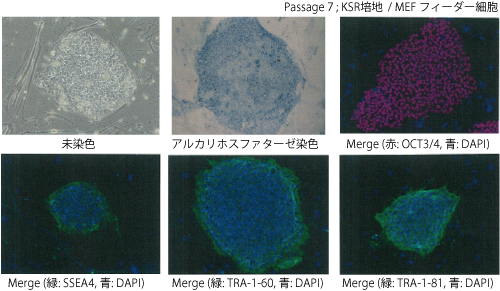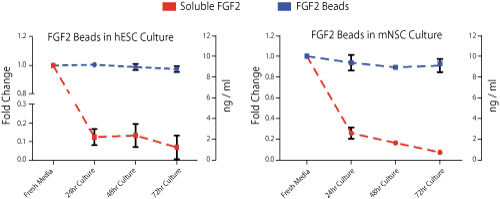これまで弊社e-Nacalai ではELISA、抗体、構造式など様々な専用検索を提供してきましたが、この度、HPLCカラム専用検索を新設しました。ぜひご活用ください。
(616KB)
これまで弊社e-Nacalai ではELISA、抗体、構造式など様々な専用検索を提供してきましたが、この度、HPLCカラム専用検索を新設しました。ぜひご活用ください。
(616KB)
コスモシール3C18-EB は、医薬品成分など塩基性化合物に対してテーリングすることなくシャープなピーク形状が得られます。シャープなピーク形状により正確な定性・定量分析を可能にしたカラムです。今回は他社製品との比較と、医薬品の分析例をご紹介します。
(425KB)
このたび発売しました3C18-EB は、従来のC18 カラムとは全く異なるエンドキャップ処理を施すことにより残存シラノールに対して高い遮蔽効果が得られる様になりました。このことにより塩基性化合物に対して従来のカラムと比較しても非常に良好なピーク形状となります。また簡便な合成スキームを採用することにより合成再現性に優れ、優れた分析再現性を実現しました。
(429KB)
タンパク質分離用イオン交換HPLC カラムのCOSMOGEL® IEX シリーズは、精製用カラム以外に精密分析用もラインアップしています。精密分析用カラムは、非常に高い分離能を有するため抗体医薬など抗体分析に有効なカラムとなります。今回、イオン交換カラムを用いたモノクローナル抗体の分析例の一部をご紹介します。
(478KB)
タンパク質分離用イオン交換HPLC カラムのCOSMOGEL® IEX シリーズは、非常に高分離であることで評判を
いただいています。本製品を用いた生体成分やタンパク質の分析例が、お客様からご提供いただきましたデータも追加され、益々充実して参りました。今回は分析例の中から、一部をご紹介します。
様々な分析例は、弊社Web site(http://www.nacalai.co.jp/cosmosil/data/csmosrchtop.cfm)で公開していますので、是非、ご参照ください。
(570KB)
親水性相互作用クロマトグラフィーは、親水性化合物を高感度分析する手法として注目されています。弊社では、コスモシール HILIC をラインアップしています。コスモシール HILIC を用いた分析例をご紹介します。
他の分析例についてはWeb site(http://www.nacalai.co.jp/cosmosil/data/csmosrchtop.cfm)で公開していま
すので、ご参照ください。
(583KB)
コスモシールHILIC は、トリアゾールを結合した親水性相互作用クロマトグラフィー用カラムです。この固定相の効果により従来の親水性相互作用に加えて陰イオン交換能を有します。これにより広範囲の化合物に対して高分離を示します。この2つの相互作用の使い分け方法についてご紹介します。
こちら→
(365KB)
適切なECM環境の選択に最適
The MicroMatrix™ cell culture system is an in vitro system for live cellular attachment of cells to 36 combinations of extracellular matrix protein composed microenvironments. Compositions have been miniaturized in the form of 400µm uniform circular spots to support a cell based assay. The system relies on a cell type of interests inherent affinity towards a particular ECM combination for adherence. Cell based assays may be performed directly on the system. Assays are end user defined and readouts may include standard fluorescence based imaging and whole cell colormetric staining. Assays can be real-time or end-point and can be perform
ed using standard cell culture equipment.
| Collagen I (250μg/ml) | Collagen I (125μg/ml) Collagen III (125μg/ml) |
Fibronectin (125μg/ml) Collagen IV (125μg/ml) |
| Collagen III (250μg/ml) | Collagen I (125μg/ml) Collagen IV (125μg/ml) |
Fibronectin (125μg/ml) Collagen VI (125μg/ml) |
| Collagen IV (250μg/ml) | Collagen I (125μg/ml) Collagen V (125μg/ml) |
Fibronectin (125μg/ml) Laminin (125μg/ml) |
| Collagen V (250μg/ml) | Collagen I (125μg/ml) Collagen VI (125μg/ml) |
Fibronectin (125μg/ml) Vitronectin(125μg/ml) |
| Collagen VI (250μg/ml) | Collagen I (125μg/ml) Fibronectin (125μg/ml) |
Laminin (125μg/ml) Collagen IV (125μg/ml) |
| Fibronectin (250μg/ml) | Collagen I (125μg/ml) Laminin (125μg/ml) |
Laminin (125μg/ml) Collagen VI (125μg/ml) |
| Laminin (250μg/ml) | Collagen I (125μg/ml) Vitronectin (125μg/ml) |
Vitronectin (125μg/ml) Collagen IV (125μg/ml) |
| Vitronectin (250μg/ml) | Collagen I (125μg/ml) Topoelastin (125μg/ml) |
Vitronectin (125μg/ml) Collagen VI (125μg/ml) |
| Tropoelastin (250μg/ml) | Fibronectin (83.3μg/ml) Laminin (83.3μg/ml) Collagen I (83.3μg/ml) |
Vitronectin (125μg/ml) Laminin (125μg/ml) |
| Collagen IV (125μg/ml) Collagen VI (125μg/ml) |
Fibronectin (83.3μg/ml) Laminin (83.3μg/ml) Collagen IV (83.3μg/ml) |
Vitronectin (125μg/ml) Topoelastin (125μg/ml) |
| Collagen III (125μg/ml) Collagen V (125μg/ml) |
Vitronectin (62.5μg/ml) Laminin (62.5μg/ml) Collagen I (62.5μg/ml) Collagen IV (62.5μg/ml) |
Topoelastin (125μg/ml) Collagen IV (125μg/ml) |
| Negative Control BSA (250μg/ml) |
Fibronectin (62.5μg/ml) Laminin (62.5μg/ml) Collagen I (62.5μg/ml) Collagen IV (62.5μg/ml) |
Topoelastin (125μg/ml) Collagen VI (125μg/ml) |
Concentrations indicated in parentheses represent the concentration of the ECMP in the solution that is spotted on the slide.Each block contains a unique ECMP condition with 9 replicate spots. Spot diameter is 400 μm. Distance between spots in each block is 500 μm from center to center.Each block is 4.5 mm in diameter.
In a sterile hood:
1. One 75mm x 25mm hydrogel coated glass slide pre-printed with 36 ECMP combinations of collagen I, collagen III, collagen IV, collagen V, collagen VI, fibronectin, laminin, vitronectin and tropoelastin in a slide case
2. One four-chambered slide culture tray
| Product Name | Catalog No | Details |
|
MicroMatrix™ 36 ECM Array |
MM012011 |
2つの方法から、お選びいただけます。


Cytoskeleton’s Arf1 and Arf6 activation assays are in two formats: G-LISAs and pull-downs. G-LISAs use a 96 well plate coated with an effector protein that selectively binds active Arf1 or Arf6, followed by quantitation with ELISA techniques. Typical Arf6 G-LISA data are shown (right). Arf pull-downs utilize the Arf1 and Arf6 protein binding domain (PBD) of the effector protein GGA3 (Golgi-localized γ-ear containing, Arf-binding protein 3), which specifically binds the GTP-bound form of Arf1 and Arf6. The GGA3-PBD is covalently conjugated to colored sepharose beads, enabling the “pull-down”of active Arf1-GTP and Arf6-GTP for quantification by Western blotting.
Right: Arf6 activation measured by G-LISA. Lysates for Arf6 G-LISA were prepared from MDCK cells that were either attached to tissue culture plates (activated) or kept in suspension for 2 hours (control). 12.5, 6.25, and 3.1 ugs of cell lysates were subjected to the G-LISA assay (Cat. # BK133). Absorbance was read at 490 nm. Data are background subtracted.
Products

New products are an essential component of our range. Introductions are made on an ongoing basis, with hundreds of new small molecules, peptides and antibodies being added every year. Our aim is to find the latest, otherwise unobtainable research tools, and bring them to the market as quickly as we can.
| Cat.No. | Product Name | Activity |
| 4799 | Capecitabine | Prodrug of 5-Fluorouracil (Cat. No. 3257). Inhibits DNA synthesis |
| 4798 | (S)-Duloxetine hydrochloride | Potent 5-HT and NE reuptake inhibitor; also blocks dopamine reuptake |
| 4786 | PD 0332991 isethionate | Potent, selective Cdk4/6 inhibitor; brain penetrant |
| 4537 | NCX 466 | Cyclooxygenase-inhibiting nitric oxide donor |
| 4754 | AK 7 | Selective SIRT2 inhibitor; brain penetrant |
| 4674 | CZC 24832 | Selective inhibitor of PI 3-Kinase γ |
| 4670 | SB 611812 | Urotensin-II (UT) antagonist; attenuates cardiac dysfunction |
| 4365 | TC-MCH 7c | Selective melanin-concentrating hormone receptor 1 (MCH1R) antagonist |
| 3379 | Phenamil | Inhibits TRPP3-mediated currents; also inhibits epithelial Na+ channels |
| 4781 | ANA 12 | TrkB receptor antagonist |
| 4761 | Plumbagin | Induces G2/M cell cycle arrest; anticancer |
| 4731 | KY 02111 | Promotes differentiation of human ESCs and iPSCs into cardiomyocytes |
| 4717 | Jervine | Inhibitor of Hedgehog (Hh) signaling; binds directly to Smo |
| 4700 | PU 02 | Negative allosteric modulator of 5-HT3 |
| 4676 | ARRY 520 trifluoroacetate | Potent and selective kinesin spindle protein (KSP) inhibitor; induces Mcl-1 degradation |
| 4554 | GC 1 | High affinity thyroid receptor α (TRα) and TRβ agonist; thyromimetic |
| 3380 | Benzamil | NCX inhibitor, Deg/ENaC channel blocker; amiloride (Cat. No. 0890) derivative |
CBB-R250色素を採用したCBB Stain One Superを発売しました。汎用されているCBB-R250色素特有の青紫色のバンドで、従来のCBB Stain One(Ready To Use)と比較し染色バンドが見やすくなった1液タイプの染色液です。
弊社従来品のCBB Stain Oneと比較した場合、本製品は濃い色調のCBB-R250色素を採用したことにより、染色時間も短縮されています。また、Rapid Stain CBB kitと比較した場合、本製品は、1液タイプで調整の手間が不要かつ刺激性の強い酢酸も含まれていません。
| CBB Stain One Super (#11642) | CBB Stain One (#04543) | Rapid Stain CBB kit (#30035) |
|
|---|---|---|---|
| 色素 | CBB-R250 | CBB-G250 | CBB-R250 |
| 形状 |
・1液タイプ ・酢酸、メタノール不含 |
・1液タイプ
・酢酸、メタノール不含 |
・2液タイプ ・酢酸含有、メタノール不含 |
| 染色時間 | 30分 | 60分 | 20分 |
| 脱色時間 | 6時間~1晩 | 6時間~1晩 | 1晩 |
| 検出感度 | 数十ng | ||
本製品は、他社のR250色素を採用している製品と比較し、同等以上の感度や視認性が得られています。また、G250色素を採用している従来のCBB Stain Oneと比較し、感度は同等ですが、濃い色調で染色されるため視認性が高くなっています。

|
|||||||||||
本製品の使用方法の概要を示します。
 |
|||||
|
|||||
| 製品名 | 規格 | 貯法 | 製品番号 | 容量 | 価格 |
|---|---|---|---|---|---|
| CBB Stain One Super(Ready To Use) | SP | 室温 | 11642-31 | 1 L | 13,500 |
※記載の内容は、'13年3月現在の情報に基づいております。
本製品の使用により、CBB法において、高濃度の界面活性剤や塩類、変性剤を含む溶液のタンパク質定量が可能です。操作は簡単で、タンパク質沈殿法により、これらの妨害物質を除去でき、測定用サンプルの調製が可能です。
■SDS-PAGE用試料緩衝液に溶解しているタンパク質の定量
妨害物質である還元剤、界面活性剤を共に含む試料緩衝液中のタンパク質(BSA)を測定した結果を示します。A社除去キット使用時には、定量性が得られませんでしたが、本製品では定量性が得られており、除去効果が確認できました。
 |
以下に妨害物質の例を示します。水色の列は、直接サンプルをCBB法で測定しても影響を与えない妨害物質の最大濃度を示し、紫色の列は本製品を使用した場合の最大濃度を示しています。界面活性剤、変性剤、塩類では妨害物質の影響が大幅に減少しています。
*キレート剤含有または酸性溶液(pH約5以下)の場合、中和もしくは表記載濃度まで希釈してからご使用ください。
使用前に製品添付文書をご参照ください。
| 妨害物質 | 直接 CBB法 | 本製品使用時 | 妨害物質 | 直接 CBB法 | 本製品使用時 |
|---|---|---|---|---|---|
| 界面活性剤 | 変性剤 | ||||
| Brij35 | 0.05% | 7.5% | Ammonium Sulfate | 2M | 1M |
| NP-40 | 0.05% | 10% | Arginine・Na | 2M | 2M |
| Octylβ-glucoside | 1% | 15% | Guanidine・HCl | 1M | 6M |
| Octylβ-thioglucopyranoside | 1% | 15% | Urea | 4M | 8M |
| Triton®X-100 | 0.1% | 15% | Thiourea | 2M | 2M |
| Tween®-20 | 0.05% | 15% | Buffer | ||
| CTAB | 0.005% | 2% | Glycine pH2.8 | 1M | 0.1mM* |
| Deoxycholic Acid | 0.025% | 7.5% | HEPES pH7.5 | 0.5M | 1M |
| SDS | 0.01% | 2% | MES pH6.1 | 1M | 1M |
| CHAPS | 0.5% | 15% | MOPS pH7.2 | 1M | 1M |
| CHAPSO | 0.5% | 15% | PBS | 5X | 5X |
| 還元剤 | Sodium Acetate pH5.2 | 0.75M | 1.5M | ||
| DTT | 0.5M | 0.5M | Sodium Bicarbonate | 0.25M | 0.5M |
| 2-Mercaptoethanol | 5M | 1.25M | TBS;Tris(25mM),NaCl(137mM) | 5X | 5X |
| TCEP pH7.6 | 0.25M | 0.25M | Tris-HCl pH8 | 2M | 4M |
| Glutathione pH7 | 125mM | 125mM | その他 | ||
| キレート剤 | KCl | 1M | 4M | ||
| EDTA | 0.25M | 25mM* | NaCl | 1.25M | 5M |
| EGTA | 0.25M | 5mM* | MgCl2 | 0.5M | 4.5M |
| Sodium Citrate | 0.25M | 100mM* | HCl | 0.1M | 10mM* |
本製品を加え遠心操作を行う事で、タンパク質を沈殿させ、妨害物質を除去します。沈殿後のタンパク質にプロテインアッセイCBB溶液を直接添加する事で、定量が可能です。
尚、本製品により0.2~1.0mg/ml濃度のタンパク質溶液を沈殿できます。
*詳細は製品添付文書をご参照ください。
| 製品名 | 規格 | 貯法 | 製品番号 | 容量 | 価格 |
|---|---|---|---|---|---|
| Protein Assay CBB Clean Up Kit | SP | 室温 | 11611-60 | 1 kit(250回) | 9,300 |
※記載の内容は、'13年3月現在の情報に基づいております。
*1細胞種、細胞密度によって培地交換の回数の調整が必要となります。
*2現時点で特定の培地に対する不具合は確認されていません。
StemBeadsで育てたiPS細胞やES細胞のコロニーは典型的な形態を示すことが実証されています。
データご提供:京都大学物質−細胞統合システム拠点 (iCeMS) 長谷川 光一講師、吉田 則子研究員
| ■ヒト iPS細胞株 253G1* |
 |
|
■ヒト ES細胞株 KhES-1 |
 |
|
■ヒト ES細胞株 H9 |
 |
■FGF量の変化
 |
| 従来法によりFGF2を添加した場合、安定性の問題により、FGF2は激減します。StemBeadsを使用すると、3日間一定量でFGF2が徐放されます。 |
■従来法との未分化マーカーの発現量、核型解析、コロニー形態の比較
 |
| MEFフィーダー細胞上で1ヶ月間培養したヒトES細胞のFACS解析では、本製品を添加した培地を3日に一度の培地交換により培養した細胞と従来法により培養した細胞で類似したプロファイルを示します。しかし、qRT-PCRの結果では、NANOGの発現量が著しく上昇し、分化マーカーのSOX17やBrachyuryは著しく減少しました。hESCの正常核型を増殖前に評価して、従来法または本製品使用による増殖後1ヶ月の細胞についても評価しました。その結果、いずれも、異常は確認されませんでした。免疫細胞染色では、本製品の使用と従来法を比較した結果、コロニーの形態や多能性マーカーであるOCT4、NANOGの発現量が類似していました。 |
■ 従来法とのマウス神経幹細胞における未分化状態維持の比較
 |
| FGF2 Beadsは、マウスの神経幹細胞について未分化状態の維持に優れることが示されています。本製品を添加した培地を用い1週間培養したマウスの神経幹細胞は、従来法やFGF2を含まない場合と比較して前駆細胞(Nestin+)の数が上昇し、神経に分化した細胞(TUJ1+)の数が減少することが示されています(Scale bars=50microns)。 ここには掲載していませんが、ヒトの神経幹細胞でも同様の結果が得られています。 |
| ● 培地中に徐放されるFGF2の濃度はどの程度ですか? |
|
⇒培地1 mlに対し、7.5 µl のStemBeadsを混合した場合、FGF2の濃度は10 ng/ml です。実際のデータは前ページの性能評価1を参照ください。 |
|
● StemBeadsの細胞/コロニーへの付着が認められます。問題はありますか? |
|
⇒StemBeadsは生分解性ポリマーのPLGA [Poly(lactic-co-glycolic Acid)]から成りますので次第になくなり、細胞に悪影響はありません。 |
|
● StemBeadsの有効期限はどれくらいですか? |
|
⇒商品到着後、4℃保管で6ヶ月間はFGF2の活性は低下しません。 |
|
● StemBeadsはどのような細胞に適用できますか? |
|
⇒現時点では、ヒトES細胞、ヒト iPS細胞、マウスおよびヒト神経幹細胞での適用を確認しています。基本的に、Human FGF2を必要とする細胞には適用可能と考えます。 |
|
● 培地交換の操作は? |
|
⇒培地交換は、古い培地を除去後PBSで洗浄してから、新しい培地を加えます。 |
|
● StemBeadsの使用時は、培地が通常時よりも黄色に変色します。何か問題はありますか? |
|
⇒培地の交換頻度が少なく済むために、pHが早く変化して黄色に変色します。このような現象が起こっても、細胞の増殖能や分化に影響は与えませんが、避ける場合には低密度で細胞を播種してください。StemBeadsは低-中程度の細胞密度に最適化されています。 |
|
● ヒトES細胞やiPS細胞の融解後、直ぐにStemBeadsを用いて培養すべきですか? |
|
⇒融解した細胞は、より栄養を必要とするので、コロニーが形成されるまで毎日の培地交換をお勧めします。その培地交換でもStemBeadsを使用でき、コロニー形成が早くなります。 |
| 製品名 | メーカー製品番号 | 容量 | 価格 |
|---|---|---|---|
| StemBeads FGF2 | SB500 | 3.0 ml | 56,000 |
※記載の内容は、'13年3月現在の情報に基づいております。
本製品は、使用時に希釈の手間不要なready to useタイプのタンパク質定量試薬です。
従来のProtein Assay CBB Solution(5x)と測定範囲は同じです
| アッセイ方法 | スタンダード法 | マイクロ法 | |||
|---|---|---|---|---|---|
| 試験管 | マイクロプレート | 試験管 | マイクロプレート | ||
| 測定範囲 | 0.2~1.4 mg / ml | 0.2~1.0 mg / ml | 2.5~25μg / ml | ||
| 混合 | 検量線用標準液 もしくは被検液 |
50μl | 10μl | 1 ml | 150μl |
| CBB溶液(本品) | 2.5 ml | 200μl | 1 ml | 100μl | |
■マイクロプレートスタンダードアッセイ法によりBSAを定量
 |
| CBB溶液(Ready To Use)は、他社製品と同様の測定範囲を示します。 |
■使用量が少量
 |
| 上図のとおり、マイクロプレートスタンダードアッセイ法では、当社製品は少ない試薬量でアッセイでき、ランニングコストを低減できます。 |
| 製品名 | 規格 | 貯法 | 製品番号 | 容量 | 価格 |
|---|---|---|---|---|---|
| Protein Assay CBB Solution(Ready To Use) | SP | 冷蔵 | 11617-71 | 1 L | 14,500 |
※記載の内容は、'13年3月現在の情報に基づいております。
| Ark Pharm | 光学活性化合物 |
| Apollo Scientific | ふっ素化合物 |
| Strem | 鈴木―宮浦カップリング反応試薬 |
| Strem | メタセシス触媒 |
| SiliCycle® | SiliaMetS®(金属スカベンジャー) |
| ナカライテスク | e-Nacalai Search Version構造式検索 |
| ナカライテスク | COSMOSIL® HILICカラム |
| ナカライテスク | COSMOSIL® Cholesterカラム |
| LKT Laboratories | 天然物 |
| U.S. PHARMACOPEIA | U.S. PHARMACOPEIA Reference Standards |
20S、26Sプロテアソーム、COP9シグナロソーム、プロテアソーム基質
20S Proteasome (Human)
Quantity: 50 μg, 0.5mg/ml
Buffer: 20 mM Tris-HCl pH 7.2, 10% Glycerol, 150 mM KCl, 1 mM β–mercaptoethanol.
Source: Human red blood cells
Storage: -80o C. Avoid repeated freeze/thaw cycles
20S proteasome was purified from human blood cells by DEAE chromatography follow by the ammonium sulfate precipitation (60%), Mono Q and Resource Q chromatography. Purified complex was resolved on 10% SDS polyacrylamide gel and stained with Coomassie blue.
|
The chymotrypsin-like activity of the 20S proteasome (45μg/ml) was measured using 100μM Suc-LLVY-AMC in 20 mM HEPEs, pH 7.5, 0.5 mM EDTA, 0.05% Triton X, plus or minus 0.035% SDS |
The chymotrypsin-like activity of the 20S proteasome (18 μg/ml) was measured using 100μM Suc-LLVY-AMC in 20 mM HEPEs, pH 7.5, 0.5 mM EDTA, 0.05% Triton X, plus or minus 0.5 mM MG132 (Cat. # SI9710) |

| Product Name | Cat # | Vol. |
| 20S Proteasome (Human) | PS020 | 50 μg (0.5mg/ml) |
26S Proteasome (Human)
Quantity: 25μg, 50μg, 0.5mg/ml
Buffer: 20 mM Tris-HCl pH 7.2, 10% Glycerol, 150 mM KCl, 1 mM β–mercaptoethanol.
Source: Human red blood cells
Storage: -80oC. Thaw the vial on ice. Avoid repeated freeze/thaw cycles
26S was purified from human blood cells by DEAE chromatography follow by the ammonium sulfate precipitation (60%), Mono Q and Resource Q chromatography. Purified complex was resolved on 10% SDS polyacrylamide gel and stained with Coomassie blue.
| The chymotrypsin-like activity of the 26S proteasome (45μg/ml) was measured using 100μM Suc-LLVY-AMC in 20 mM HEPEs, pH 7.5, 0.5 mM EDTA, 0.05% Triton X, plus or minus 0.035% SDS | The chymotrypsin-like activity of the 26S proteasome (18 μg/ml) was measured using 100μM Suc-LLVY-AMC in 20 mM HEPEs, pH 7.5, 0.5 mM EDTA, 0.05% Triton X, plus or minus 0.5 mM MG132 (Cat. # SI9710) |
| Product Name | Cat # | Vol. |
| 26S Proteasome (Human) | PS026 | 25μg (0.5mg/ml) |
| 50μg (0.5mg/ml) |
COP9 Signalosome Complex (CSN, Human)
Quantity: 10 μg
Buffer: 20 mM Tris-HCl pH 7.2, 10% Glycerol, 150 mM KCl, 1 mM β–mercaptoethanol.
Source: Human red blood cells
Storage: -80oC. Avoid repeated freeze/thaw cycles
CSN complex was purified to homogeneity from human red blood cells using DEAE, Mono Q and Resource Q chromatography. Final fraction was resolved on 10% SDS polyacrylamide gel and stained with Coomassie blue (A). This preparation retains deneddylase activity (B)
| Product Name | Cat # | Vol. |
| COP9 Signalosome Complex (CSN, Human) | CP009 | 10 μg |
Rpn1 Protein (26S Proteasome Regulatory Subunit 1)
Quantity: 50 μg
Molecular weight: 109.5kDa
Tag: His6
Buffer: 20 mM sodium phosphate pH 7.4, 500 mM NaCl, 200 mM imidazole, 1mM β– mercaptoethanol.
Source: Yeast recombinant, expressed in E. coli. Accession number P38764.
Storage: -80oC. Avoid repeated freeze/thaw cycles
Recombinant Rpn1 protein (Hisx6 tag) was expressed in E.coli and purified on the Ni-NTA resin using a standard protocol. 5ug of purified protein was resolved on 10% PAGE and stained with Coomassie blue.
| Product Name | Cat # | Vol. |
| Rpn1 Protein (26S Proteasome Regulatory Subunit 1) | PS110 | 50 μg |
Rpn2 Protein (26S Proteasome Regulatory Subunit 2)
Quantity: 50 μg
Molecular weight: 104.2kDa
Tag: His6
Buffer: 20 mM sodium phosphate pH 7.4, 500 mM NaCl, 200 mM imidazole, 1mM β– mercaptoethanol.
Source: Yeast recombinant, expressed in E. coli. Accession number P32565.
Storage: -80oC. Avoid repeated freeze/thaw cycles
Recombinant Rpn2 protein (Hisx6 tag) was expressed in E.coli and purified on the Ni-NTA resin using a standard protocol. 5ug of purified protein was resolved on 10% PAGE and stained with Coomassie blue.
| Product Name | Cat # | Vol. |
| Rpn2 Protein (26S Proteasome Regulatory Subunit 2) | PS120 | 50 μg |
Suc-Leu-Leu-Val-Tyr-AMC (Suc-LLVY-AMC), Proteasome Substrate
Quantity: 5mg
Molecular weight: 763.9
Formula: C40H53N5O10
State: Lyophilized powder
Purity: >98% by TLC
Solubility: DMSO at least 5mM. Concentration range 10-100μM.
Storage: Dry reagent at 4oC; Store DMSO stock at -20oC. Avoid repeated freeze/thaw cycles
Formula:
| Product Name | Cat # | Vol. |
| Suc-Leu-Leu-Val-Tyr-AMC (Suc-LLVY-AMC), Proteasome Substrate | PS500 | 5mg |
平素はInvivoGen社商品のご愛顧を賜り厚くお礼申し上げます。
さて、この度InvivoGen社細胞商品について品質安定のため、輸送条件が凍結状態での輸送に変更されますので、お知らせします。
現在の細胞を休眠状態にしたうえでの室温輸送から、凍結状態、ドライアイス梱包での輸送に変更します。
2013年3月15日(金) InvivoGen社出荷分より
品質安定のため
細胞を休眠状態にしたうえでの室温輸送
↓
細胞を凍結状態、ドライアイス梱包での輸送
当該商品がお手元に到着次第、直ぐに細胞培養をお願いします。
| 商品名 | メーカー製品番号 |
|---|---|
| 293/hMD2-CD14 | 293-hmd2cd14 |
| 293/hNOD1 | 293-hnod1 |
| 293/hNOD2 | 293-hnod2 |
| 293/hTLR1-HA | 293-htlr1ha |
| 293/hTLR2 | 293-htlr2 |
| 293/hTLR2-TLR6 | 293-htlr2/6 |
| 293/hTLR2-CD14 | 293-htlr2cd14 |
| 293/hTLR2-HA | 293-htlr2ha |
| 293/hTLR3 | 293-htlr3 |
| 293/hTLR3-HA | 293-htlr3ha |
| 293/hTLR4A | 293-htlr4a |
| 293/hTLR4-HA | 293-htlr4ha |
| 293/hTLR4A-MD2-CD14 | 293-htlr4md2cd14 |
| 293/hTLR5 | 293-htlr5 |
| 293/hTLR5-CD14 | 293-htlr5cd14 |
| 293/hTLR5-HA | 293-htlr5ha |
| 293/hTLR6-HA | 293-htlr6ha |
| 293/hTLR10-HA | 293-htlr10ha |
| 293/LacZ | 293-lacz |
| 293/mNOD1 | 293-mnod1 |
| 293/mNOD2 | 293-mnod2 |
| 293/mTLR1 | 293-mtlr1 |
| 293/mTLR1-TLR2 | 293-mtlr1/2 |
| 293/mTLR2 | 293-mtlr2 |
| 293/mTLR2-TLR6 | 293-mtlr2/6 |
| 293/mTLR3 | 293-mtlr3 |
| 293/mTLR4 | 293-mtlr4 |
| 293/mTLR4-MD2-CD14 | 293-mtlr4md2cd14 |
| 293/mTLR5 | 293-mtlr5 |
| 293/mTLR6 | 293-mtlr6 |
| 293/mTLR9 | 293-mtlr9 |
| 293/null | 293-null |
| 293XL/hTLR7 | 293xl-htlr7 |
| 293XL/hTLR7-HA | 293xl-htlr7ha |
| 293XL/hTLR8 | 293xl-htlr8 |
| 293XL/hTLR8-HA | 293xl-htlr8ha |
| 293XL/hTLR9 | 293xl-htlr9 |
| 293XL/hTLR9-HA | 293xl-htlr9ha |
| 293XL/mTLR7 | 293xl-mtlr7 |
| 293XL/null | 293xl-null |
| HEK-Blue™ CD40L cells | hkb-cd40 |
| HEK-Blue™ CD40L kit | hkb-cd40-kit |
| HEK-Blue™ hMD2-CD14 cells | hkb-hmdcd |
| HEK-Blue™ hNOD1 cells | hkb-hnod1 |
| HEK-Blue™ hNOD2 cells | hkb-hnod2 |
| HEK-Blue™ hTLR2 cells | hkb-htlr2 |
| HEK-Blue™ hTLR3 cells | hkb-htlr3 |
| HEK-Blue™ hTLR4 cells | hkb-htlr4 |
| HEK-Blue™ hTLR5 cells | hkb-htlr5 |
| HEK-Blue™ hTLR7 cells | hkb-htlr7 |
| HEK-Blue™ hTLR8 cells | hkb-htlr8 |
| HEK-Blue™ hTLR9 cells | hkb-htlr9 |
| HEK-Blue™ IFN-α/β cells | hkb-ifnab |
| HEK-Blue™ IFN-γ cells | hkb-ifng |
| HEK-Blue™ IL-18/1L-1β cells | hkb-il18 |
| HEK-Blue™ IL-18/IL-1β kit | hkb-il18-kit |
| HEK-Blue™ IL-1β cells | hkb-il1b |
| HEK-Blue™ IL-1β kit | hkb-il1b-kit |
| HEK-Blue™ IL-33/IL-1β cells | hkb-il33 |
| HEK-Blue™ IL-6 cells | hkb-il6 |
| HEK-Blue™ IL-6 kit | hkb-il6-kit |
| HEK-Blue™ mNOD1 cells | hkb-mnod1 |
| HEK-Blue™ mNOD2 cells | hkb-mnod2 |
| HEK-Blue™ mTLR2 cells | hkb-mtlr2 |
| HEK-Blue™ mTLR3 cells | hkb-mtlr3 |
| HEK-Blue™ mTLR4 cells | hkb-mtlr4 |
| HEK-Blue™ mTLR5 cells | hkb-mtlr5 |
| HEK-Blue™ mTLR7 cells | hkb-mtlr7 |
| HEK-Blue™ mTLR8 cells | hkb-mtlr8 |
| HEK-Blue™ mTLR9 cells | hkb-mtlr9 |
| HEK-Blue™ Null1 cells | hkb-null1 |
| HEK-Blue™ Null1-k cells | hkb-null1k |
| HEK-Blue™ Null1-v cells | hkb-null1v |
| HEK-Blue™ Null2 cells | hkb-null2 |
| HEK-Blue™ Null2-k cells | hkb-null2k |
| HEK-Blue™ IL-4/IL-13 cells | hkb-stat6 |
| HEK-Blue™ IL-4/IL-13 kit | hkb-stat6-kit |
| HEK-Blue™ TGF-β cells | hkb-tgfb |
| HEK-Blue TGF-β kit | hkb-tgfb-kit |
| HEK-Blue™ TNF-α/IL-1β cells | hkb-tnfil1 |
| HEK-Blue™TNF-α/IL-1β kit | hkb-tnfil1-kit |
| HEK-Dual™ IFN-γ cells | hkd-ifng |
| HEK-Dual TNFα cells | hkd-tnfa |
| Jurkat-Dual™ cells | jktd-isnf |
| C3H/TLR4mut MEF | mef-c3h4m |
| C3H/WT MEF | mef-c3hwt |
| C57/WT MEF | mef-c57wt |
| RAW-Blue™ ISG cells | raw-isg |
| RAW-Lucia™ ISG Cells | rawl-isg |
| RAW-Blue™ cells | raw-sp |
| PlasmoTest™ | rep-pt1 |
| PlasmoTest™ | rep-pt2 |
| Ramos-Blue™-defMyD cells | rms-dmyd |
| Ramos-Blue™ cells | rms-sp |
| THP1-defASC | thp-dasc |
| THP1-Dual™ Cells | thpd-nfis |
| THP1-defNLRP3 | thp-dnlp |
| THP1-Blue™ ISG Cells | thp-isg |
| THP1-Lucia™ ISG Cells | thpl-isg |
| THP1-Lucia™ Cells | thpl-nfkb |
| THP1-Blue™ NF-κB Cells | thp-nfkb |
| THP1-Null | thp-null |
| THP1 -XBlue™-CD14 cells | thpx-cd14sp |
| THP1-XBlue™-defMyD cells | thpx-dmyd |
| THP1 -XBlue™-MD2-CD14 cells | thpx-mdcdsp |
| THP1-XBlue™ cells | thpx-sp |
超高感度!微量サンプルでも測定可能

VeriKine-HSTM Human Interferon Beta Serum ELISA Kit
• Allows accurate Human IFN-β measurement to as low as 1.2 pg/ml
• Compatibles with human serum, plasma, autoimmune disease sera, or cell culture media
• Provides high precision assay reproducibility with < 8% inter-assay CV
• Suitable for measurement of trademarked therapeutic molecules in human serum samples
Interferon beta (IFN-β) has long been known to function as an inhibitor of viral
replication as part of body’s innate antiviral response. It is also widely used as a
treatment for Multiple Sclerosis (MS) patients, either as a single agent or as part of a
combinatorial approach. With the resurgence of interest in antitumor immunity as a
promising treatment approach for several types of cancers, there has been renewed
focus on applying IFN-β as a therapy due to the anti-tumor and immunomodulatory
properties of the protein. In addition, ligation of Toll-Like Receptors (TLRs)
leads to IFN-β production and, as novel TLR agonists and antagonists are being
developed as therapeutics for several diseases, it may be useful to monitor IFN-β
level as a downstream readout for compound effectiveness.
The VeriKine-HSTM Human Interferon Beta Serum ELISA kit has been developed
to measure low or basal levels of human IFN-β in serum, plasma or tissue culture
media samples. This assay is also suitable for measurement of trademarked IFN-β
therapeutic compounds in human serum. Researchers and clinical investigators
examining a) the pharmacokinetics of IFN-β molecules, b) IFN-β as a biomarker,
or c) IFN-β as a pharmacodynamic marker of TLR agent or other immune response modifier activity will find this highly sensitive and specific assay to be an essential laboratory tool.
Dose Response in Normal Human Serum Spiked with 0, 1, 3, and 10 U/ml IFN-β

Correlation between ELISA Standard Curves prepared in Standard Diluent and Normal Human Serum


| Description | Package Size | |
| 41415-1 | VeriKine-HSTM Human Interferon Beta Serum ELISA Kit Compatibility: human serum, plasma, cell culture media plate Assay range: 1.2-150 pg/ml |
1 x 96-stripwell |
Kit Speci!cations:
• Assay range: 1.2-150 pg/ml
• Format: 96-stripwell plate
• Sample volume: 50 μl per well
• Detection: colorimetric
• Assay time: 3 hours
• Compatibility: human serum, plasma, or cell culture media
• Speci!city: human IFN-β. Does not cross-react with human IFN-α,
IFN-γ, IFN-ω, IL-6; no cross-reactivity with mouse IFN-α, IFN-β or Rat IFN-β
Kit Components:
• Precoated 96-stripwell plate
• Plate sealer
• Recombinant human IFN-β standard
• Wash solution concentration
• Standard diluent
• Sample buller
• Antibody concentrate
• HRP conjugate concentrate
• Assay diluent
• TMB substract solution
• Stop solution
コスモシールHILIC は、トリアゾールを結合させることにより親水性相互作用に加えて陰イオン交換能を有し
ます。この親水性相互作用と陰イオン交換能によりユニークな保持挙動や分離能を示します。
(179KB)